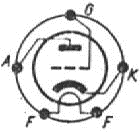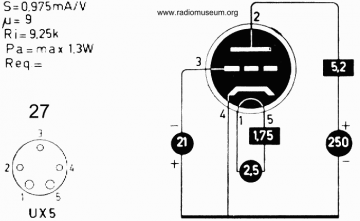weirdjim
Ejection Handle Pulled
- Joined
- Jul 8, 2008
- Messages
- 4,171
- Location
- Grass Valley, CA (KGOO)
- Display Name
Display name:
weirdjim
... except that some of the 1920s aircraft used them sparingly ..
Been looking for a week and can't find pinout or filament voltage of a #427 DeForest Audion vacuum tube. 5 pin, no plate cap. Any suggestions (my oldest ARRL 1961 and 1939 Aeronautical Radio manuals don't list them)?
Jim
Been looking for a week and can't find pinout or filament voltage of a #427 DeForest Audion vacuum tube. 5 pin, no plate cap. Any suggestions (my oldest ARRL 1961 and 1939 Aeronautical Radio manuals don't list them)?
Jim



